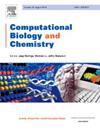利用临床变量探索作为三阴性乳腺癌诊断和预后生物标志物的新型四基因系统。
IF 2.6
4区 生物学
Q2 BIOLOGY
引用次数: 0
摘要
三阴性乳腺癌(TNBC)是预后不良的乳腺癌亚型。本研究旨在寻找 TNBC 治疗预后生物标志物的真正枢纽基因。研究人员使用 R 软件包 limma 分析了 GEO 数据集 GSE27447 和 GSE233242,以探索 DEGs。PPI使用STRING数据库生成。使用 Cytoscape 软件插件筛选枢纽基因。利用 DAVID 数据库进行了 GO 功能富集和 KEGG 通路富集分析。利用不同的在线表达数据库,研究真实的枢纽基因在具有不同临床病理特征的 TNBC 患者的肿瘤驱动、诊断和预后中的功能。两个数据集共鉴定出 100 个 DEGs。在对 PPI 网络进行拓扑参数分析后,确定了七个枢纽基因。KEGG通路和GO分析表明,四个基因(PSMB1、PSMC1、PSMF1和PSMD8)高度富集于蛋白酶体,最终被认为是真正的枢纽基因。此外,表达分析表明,与对照组相比,TNBC 患者的枢纽基因明显上调。此外,相关性分析表明,在 TNBC 样本中,真正中心基因的表达与各种辅助数据(包括肿瘤纯度、启动子甲基化状态、总生存期(OS)、基因改变、CD8+ T 和 CD4+ 免疫细胞浸润等)之间存在正相关和负相关。最后,我们的分析确定了几种重要的化疗药物、miRNA 和转录因子 (TFS),它们具有令人感兴趣的治疗潜力。总之,我们发现了四个真正的枢纽基因,它们是新型生物标记物,能克服 TNBC 患者在诊断、预后和治疗方面面临的异质性挑战。本文章由计算机程序翻译,如有差异,请以英文原文为准。
Exploring a novel four-gene system as a diagnostic and prognostic biomarker for triple-negative breast cancer, using clinical variables
Triple-negative breast cancer (TNBC) is a subtype of breast cancer with a poor prognosis. This research aims to find real hub genes for prognostic biomarkers of TNBC therapy. The GEO datasets GSE27447 and GSE233242 were analyzed using R package limma to explore DEGs. The PPI was generated using the STRING database. Cytoscape software plug-ins were used to screen the hub genes. Using the DAVID database, GO functional enrichment and KEGG pathway enrichment analysis were performed. Different online expression databases were employed to investigate the functions of real hub genes in tumor driving, diagnosis, and prognosis in TNBC patients with various clinicopathologic characteristics. A total of one hundred DEGs were identified between both datasets. The seven hub genes were identified after the topological parameter analysis of the PPI network. The KEGG pathway and GO analysis suggest that four genes (PSMB1, PSMC1, PSMF1, and PSMD8) are highly enriched in proteasome and were finally considered as real hub genes. Additionally, the expression analysis demonstrated that hub genes were notably up-regulated in TNBC patients compared to controls. Furthermore, correlational analyses revealed the positive and negative correlations among the expression of the real hub genes and various ancillary data, including tumor purity, promoter methylation status, overall survival (OS), genetic alterations, infiltration of CD8+ T and CD4+ immune cells, and a few more, across TNBC samples. Finally, our analysis identified a couple of significant chemotherapeutic drugs, miRNAs and transcription factors (TFS) with intriguing curative potential. In conclusion, we identified four real hub genes as novel biomarkers to overcome heterogenetic-particular challenges in diagnosis, prognosis, and therapy for TNBC patients.
求助全文
通过发布文献求助,成功后即可免费获取论文全文。
去求助
来源期刊

Computational Biology and Chemistry
生物-计算机:跨学科应用
CiteScore
6.10
自引率
3.20%
发文量
142
审稿时长
24 days
期刊介绍:
Computational Biology and Chemistry publishes original research papers and review articles in all areas of computational life sciences. High quality research contributions with a major computational component in the areas of nucleic acid and protein sequence research, molecular evolution, molecular genetics (functional genomics and proteomics), theory and practice of either biology-specific or chemical-biology-specific modeling, and structural biology of nucleic acids and proteins are particularly welcome. Exceptionally high quality research work in bioinformatics, systems biology, ecology, computational pharmacology, metabolism, biomedical engineering, epidemiology, and statistical genetics will also be considered.
Given their inherent uncertainty, protein modeling and molecular docking studies should be thoroughly validated. In the absence of experimental results for validation, the use of molecular dynamics simulations along with detailed free energy calculations, for example, should be used as complementary techniques to support the major conclusions. Submissions of premature modeling exercises without additional biological insights will not be considered.
Review articles will generally be commissioned by the editors and should not be submitted to the journal without explicit invitation. However prospective authors are welcome to send a brief (one to three pages) synopsis, which will be evaluated by the editors.
 求助内容:
求助内容: 应助结果提醒方式:
应助结果提醒方式:


